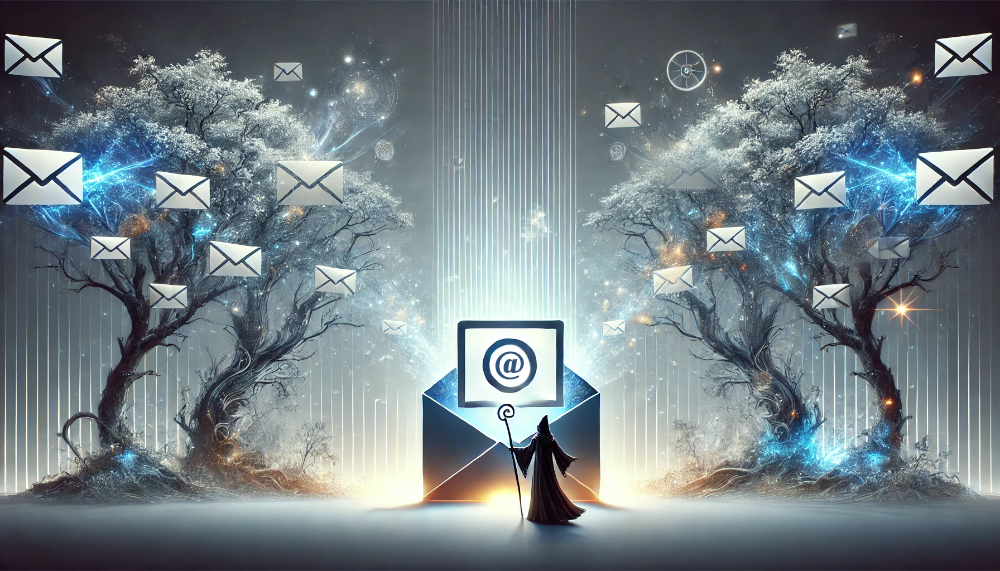Leave a Comment / By Taylen Carver / January 14, 2025

From SRP author Taylen Carver:
This post is part of the Inbox Reboot series:
Part 1: Why It Matters
Part 2: Keep It Clear
Part 3: Working the System
Part 4: The Magic of Filtering
Part 5: Filtering Beyond the Inbox
Part 6: Managing Multiple Email Addresses
Part 7: Taming the Monster Inbox
The Heart of Inbox Control
Every system has its core principles, and managing your email is no different. At the heart of email organization lies a deceptively simple rule: Delete or Filter.
If you can make this your mantra, handling email becomes a habit, not a chore. With a little practice, you’ll find yourself breezing through emails—even during stressful times or while on the go.
Let’s break down this system step by step and explore ways to make it work seamlessly for you.
Every Time You Check Email
Whenever you open your inbox, follow this straightforward process:
- Aim for Zero. Remember, the goal is an empty inbox, always.
- Start with the Oldest. Look at the sender and subject line of the oldest email.
- Delete It (If You Can). Open the email if needed to confirm it’s unnecessary, and then delete it.
- Reply Quickly (If Possible). If the email requires only a brief response, reply immediately and then delete it.
- Filter What’s Left. If you can’t act on the email now, move it to the appropriate folder for later.
That’s it! These small actions keep your inbox clean and manageable.
Fine-Tuning Deletion
While deleting might seem straightforward, a few strategies can make it even more effective:
Ban and Delete Junk
Are you marking spam as junk? If not, you’re missing a powerful time-saving tool.
Most email programs have spam filters that let you flag senders as junk. It takes just a second, but it ensures that future emails from those senders go straight to the spam folder, sparing your inbox.
Unsubscribe Strategically
Before you mark an email as junk, check for an unsubscribe link (usually found in tiny print at the bottom). Clicking it removes you from mailing lists and stops spam before it starts.
This tactic also applies to newsletters or promotions you once enjoyed but no longer need. Unsubscribing now reduces clutter and saves time in the long run.
Avoid the Preview Trap
Using a preview pane to skim emails might feel efficient, but it can backfire. Here’s why:
- Emails May Not Mark as Read. Previewing doesn’t always mark emails as opened, and some newsletters will drop you from their list if their emails go unopened for too long.
- It Slows You Down. The preview pane adds visual clutter, distracting you from quickly sorting through emails.
- Security Risks. Some malicious software can activate in the preview pane. While rare, it’s worth avoiding the risk.
- Professional Risks. At work or in public settings, previewing inappropriate or unexpected content could be embarrassing.
Turn off the preview pane in your email program for a cleaner, faster workflow.
Save Critical Emails as PDFs
Important emails can feel like clutter if they pile up in your inbox. Instead of keeping them there, “print” them to PDF files.
This creates a tamper-proof copy of the email, complete with details like the sender, date, and content. Store these PDFs in a folder on your device for easy reference and backup.
- Free Tools: Many email programs have a built-in “Save as PDF” option, or you can use free tools like PDF Creator.
- On the Go: If your mobile device doesn’t support PDF printing, move the email to a folder and process it on your desktop later.
Once saved, delete the original email from your inbox.
Capture Useful Email Addresses
Don’t rely on your email program to automatically save every address. This often results in bloated contact lists full of irrelevant or outdated entries.
Instead, manually save addresses you know you’ll need. Before deleting an email, ask yourself if the sender’s address might be useful in the future. Adding it to your contacts takes just a moment but saves time later.
Why All This Matters
You might be thinking, “This seems like a lot of effort just to delete emails!” But trust me, these steps quickly become second nature. The payoff is an inbox that works for you instead of against you.
What’s Next?
Filtering is the true heart of email management, and it’s where your system becomes uniquely yours. In the next post, we’ll dive deep into how to set up filters that make email management almost automatic.
Until then, practice deleting and filtering your emails with intention. The more you refine this habit, the closer you’ll get to the magic of an empty inbox, always.
Next Post: Filtering: A Deeper Dive

Taylen Carver
SRP Fantasy Author
Browse Taylen’s books here.



